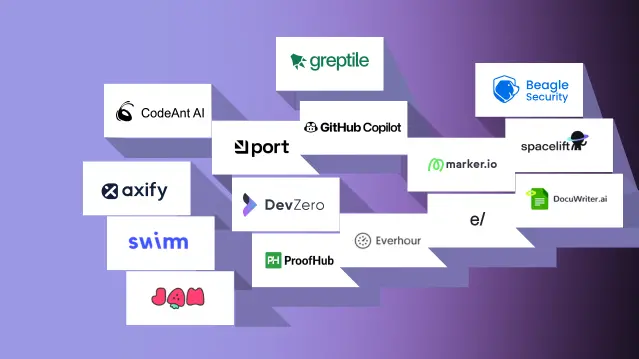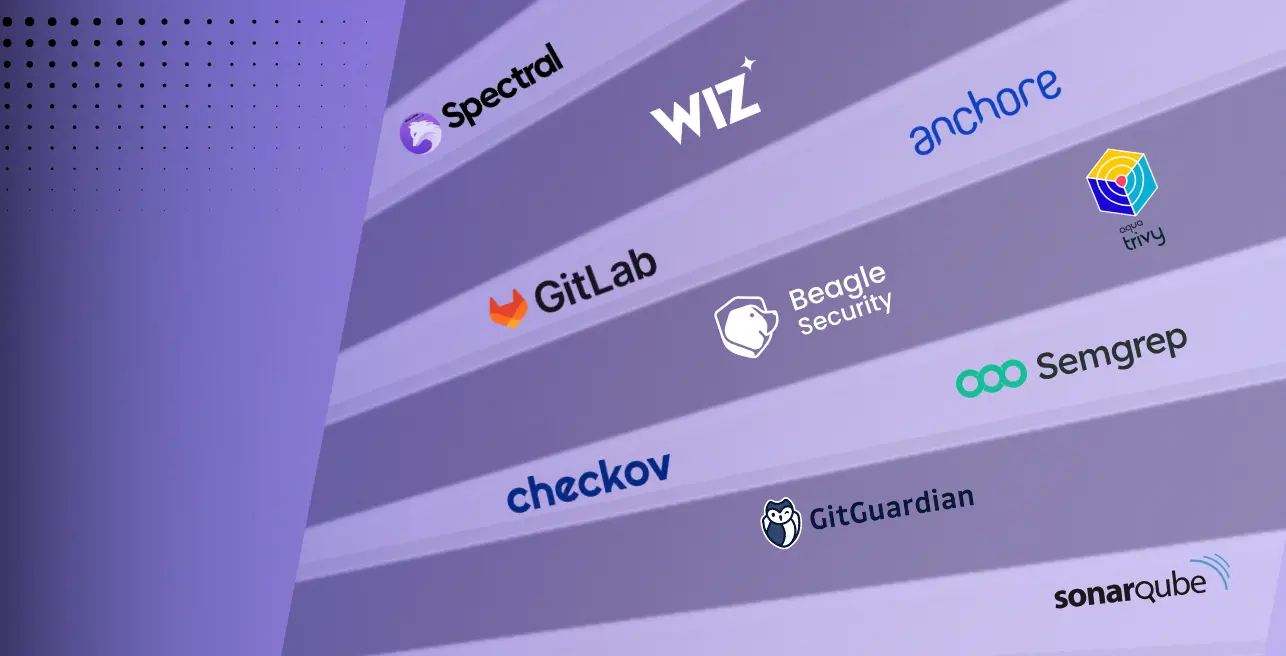
Introduction
Developer productivity has become one of the most critical priorities in 2025. As organizations increasingly rely on software to deliver products, services, and customer experiences, the pressure on developers to deliver faster, better, and more securely has never been higher. Yet the challenges are complex. Developers must balance growing codebases, hybrid and remote team structures, and the integration of artificial intelligence into every stage of the development lifecycle.
In recent years, the landscape of developer tools has transformed dramatically. Artificial intelligence has shifted from experimental projects to essential assistants embedded into coding workflows. DevOps automation tools are reducing manual tasks, enabling faster and more reliable deployments. Remote collaboration platforms are keeping global teams aligned despite time zone differences. Documentation and testing tools are becoming smarter and more integrated, closing long-standing gaps between development, QA, and operations.
For developers, engineering managers, and CTOs, choosing the right productivity tools is no longer optional. The market is crowded with thousands of tools, but not all deliver real value. Selecting the right combination can mean the difference between a team that struggles with bottlenecks and one that consistently delivers high-quality software.
In this guide, we present the top 15 developer productivity tools for 2025. These tools were chosen based on their relevance to modern workflows, ability to integrate into diverse stacks, transparent pricing, and strong user feedback. Covering categories from AI-powered coding assistants to project management, security, documentation, and DevOps automation, this list provides a well-rounded view of tools that can genuinely improve both developer efficiency and organizational outcomes.
Why developer productivity tools matter in 2025
The software development world in 2025 is fast-paced, complex, and unforgiving. Companies face constant pressure to release new features, fix bugs, and secure their applications against evolving cyber threats. At the same time, developer teams must collaborate effectively across hybrid and remote work environments. These demands have placed unprecedented strain on workflows, making productivity tools essential rather than optional.
Developer productivity tools directly impact both business and technical outcomes. They help reduce time spent on repetitive tasks, improve code quality, enhance collaboration across distributed teams, and integrate security into the development lifecycle. The rise of artificial intelligence has accelerated this trend by enabling tools that can generate, review, and test code with speed and accuracy.
Key reasons why productivity tools matter today include:
Time pressure and complexity: Codebases are larger and more interconnected, requiring intelligent tools to manage dependencies and reduce technical debt.
Remote and hybrid collaboration: With most developers working in distributed setups, collaboration and bug tracking tools ensure teams remain efficient across time zones.
AI-driven development: AI-powered assistants help reduce repetitive work and free developers to focus on solving higher-value problems.
Security-first approaches: Tools that integrate security into workflows reduce vulnerabilities without slowing down development.
ROI of investment: Organizations that adopt the right tools see measurable returns in faster delivery, fewer production issues, and happier teams.
In short, productivity tools are now the foundation of effective software development. The following sections dive into the 15 best developer productivity tools for 2025.
The top 15 developer productivity tools
1. Greptile
Website: greptile.com
Category: AI code review assistant
Greptile is an AI-powered code review tool that analyzes entire repositories to provide contextual feedback on pull requests. Unlike traditional tools that only check individual changes, Greptile understands the relationships between functions, variables, classes, and dependencies across the codebase. This makes it particularly powerful for large teams handling complex projects.
Why use Greptile?
Greptile improves review accuracy by examining the full code context and accelerates development by reducing review times. Teams using Greptile catch more bugs while merging pull requests faster, improving both quality and speed.
Greptile pros
Contextual understanding: Reviews full codebases rather than isolated changes.
Faster reviews: Pull requests are merged up to four times faster.
Actionable feedback: Provides click-to-accept fixes for minor issues.
Adaptive learning: Learns coding patterns specific to each team.
Enterprise-ready: Offers self-hosting and custom LLM support.
Greptile cons
Premium cost: More expensive than basic code review tools.
Narrow focus: Limited to code review rather than broader AI coding assistance.
Setup required: Initial integration setup can be time-consuming.
Greptile pricing
Cloud plan: $30 per developer per month.
Enterprise: Custom pricing with advanced features.
Free access: 100% free for qualified open-source projects.
Trial: 14-day free trial available.
2. CodeAnt AI
Website: codeant.ai
Category: AI code review and security platform
CodeAnt AI is a unified platform that combines code review, quality assurance, and security scanning. By consolidating multiple functions into a single tool, it reduces the need for separate solutions and helps development teams cut bugs by more than 50%.
Why use CodeAnt AI?
It replaces multiple fragmented tools with one platform, saving costs and simplifying workflows. The AI-driven approach helps teams identify and fix issues faster, improving code quality and security simultaneously.
CodeAnt AI pros
All-in-one solution: Combines review, quality checks, and security.
Cost savings: 50% cheaper than managing multiple tools.
Automated fixes: Applies corrections directly to repositories.
Enterprise ready: Generates compliance and audit-ready reports.
CodeAnt AI cons
Learning curve: Teams must adapt from multi-tool workflows.
Dependency risk: Heavy reliance on one platform.
Shallower depth: May lack specialized depth compared to dedicated tools.
CodeAnt AI pricing
Estimated range: $10–$20 per user per month.
Enterprise: Custom pricing for large organizations.
Free trial: 14-day trial available.
3. Axify
Website: axify.io
Category: Software engineering intelligence
Axify helps engineering teams track performance metrics, workflow efficiency, and delivery speed. It combines technical and process data to provide insights that help organizations deliver faster without sacrificing quality.
Why use Axify?
By tracking both development and delivery metrics, Axify gives teams visibility into bottlenecks and helps leaders make data-driven decisions. It also supports predictive analytics to forecast sprint outcomes.
Axify pros
Real-time insights: Live dashboards with actionable data.
Predictive analytics: Forecasting for sprint planning.
Process improvement: Identifies inefficiencies.
Collaboration focus: Highlights collective performance.
Axify cons
Integration setup: Requires configuration with other tools.
Data dependency: Relies on accurate, complete inputs.
Cost factor: Higher pricing tiers may not suit small teams.
Axify pricing
Starting price: $20 per user per month.
Enterprise: Custom pricing for large teams.
4. Marker.io
Website: marker.io
Category: Visual bug reporting
Marker.io simplifies bug reporting with annotated screenshots, session replays, and automatic context capture. It integrates directly into project management tools like Jira, Trello, and Asana.
Why use Marker.io?
It eliminates back-and-forth between developers and testers by automatically capturing all technical details needed to reproduce bugs.
Marker.io pros
Detailed reports: Includes screenshots, logs, and environment info.
Seamless integrations: Connects with PM tools.
Session replays: Shows what happened before the bug.
Time savings: Faster bug resolution.
Marker.io cons
Pricing: May be expensive for startups.
Narrow scope: Focused on bug reporting only.
Storage needs: High video storage requirements.
Marker.io pricing
Starting price: $39 per month.
Enterprise: Custom pricing for larger organizations.
Free trial: 15-day free trial available.
5. Jam
Website: jam.dev
Category: One-click bug reporting
Jam is a browser extension that captures screenshots, logs, and recordings to generate bug reports instantly. It integrates with Jira, GitHub, and Slack.
Why use Jam?
It removes friction in bug reporting, providing developers with complete technical context in a single click.
Jam pros
One-click reports: Quick and easy bug capture.
Comprehensive data: Logs, network errors, and device info.
AI features: Autofills report details.
Wide integrations: Works with major platforms.
Jam cons
Recording limits: Free plan has restrictions.
Browser focus: Limited mobile support.
Storage costs: High video storage needs.
Jam pricing
Free tier: $0 with limitations.
Team plan: $14 per creator per month.
Enterprise: Custom pricing.
6. Early
Website: startearly.ai
Category: AI testing automation
Early automates unit testing using AI agents that independently generate and execute tests. It reduces the burden of manual test creation while helping developers maintain high-quality codebases.
Why use Early?
By automating unit tests, Early saves developer time and ensures more consistent testing coverage, improving code reliability with minimal manual effort.
Early pros
AI-driven: Generates intelligent unit tests automatically.
Time savings: Reduces manual testing workload.
Developer-friendly: Fits into existing workflows.
Improves quality: Strengthens code reliability.
Early cons
Limited info: Features and pricing less transparent.
Specialized focus: Concentrated on testing only.
New entrant: Competing with mature testing frameworks.
Early pricing
Pricing: Not publicly listed.
Target: Individual developers and small teams.
7. DevZero
Website: devzero.io
Category: Cloud development environments
DevZero provides production-like cloud development environments using MicroVMs. It eliminates environment inconsistencies and accelerates build times for distributed teams.
Why use DevZero?
It ensures developers work in identical setups that mirror production, preventing the “works on my machine” problem and improving team collaboration.
DevZero pros
Consistency: Eliminates local vs production differences.
Scalable: Dynamic resource allocation.
Collaboration: Shared team environments.
Fast setup: Environments spin up in under a minute.
DevZero cons
Custom pricing: No transparent pricing.
Overkill: May be unnecessary for small projects.
Internet dependence: Requires strong connectivity.
DevZero pricing
Historical: Previously $39.95 per user per month.
Current: Custom pricing only.
Enterprise: Self-hosting available.
8. Port
Website: getport.io
Category: Internal developer portals
Port helps organizations create no-code internal developer portals. It centralizes microservices, assets, and workflows, offering a single pane of glass for developers.
Why use Port?
Port improves efficiency by enabling self-service for infrastructure provisioning and automating common tasks without requiring deep coding expertise.
Port pros
No-code setup: Easy to configure.
All-in-one: Catalog, self-service, and automation.
Enterprise-ready: Scales across large organizations.
Fast onboarding: Quick to implement.
Port cons
Overkill: May be too complex for small teams.
Learning curve: Requires platform engineering knowledge.
Feature balance: Simplicity vs advanced features.
Port pricing
Free tier: Available with limits.
Paid plans: Transparent pricing listed online.
Enterprise: Custom pricing for large organizations.
9. Swimm
Website: swimm.io
Category: Code documentation management
Swimm creates “living documentation” that stays in sync with code changes. Its IDE plugins ensure developers always have up-to-date, contextual documentation.
Why use Swimm?
It solves the long-standing problem of outdated documentation by automatically syncing docs with code changes.
Swimm pros
Auto-sync: Documentation updates with code.
Developer integration: Works directly in IDEs.
Context preservation: Maintains architectural knowledge.
Collaboration features: Teams can co-create docs.
Swimm cons
Setup needed: Requires CI integration.
Maintenance discipline: Teams must follow good practices.
Pricing: Enterprise-focused and expensive.
Swimm pricing
Enterprise focus: Custom pricing only.
Contact required: No public plans available.
10. Beagle Security
Website: beaglesecurity.com
Category: AI-powered application security testing
Beagle Security offers automated penetration testing for web apps and APIs. It uses AI to simulate real-world attacks and integrates seamlessly with CI/CD pipelines.
Why use Beagle Security?
Beagle Security strengthens application security without slowing down development. Its automated workflows and compliance reporting make it ideal for DevSecOps.
Beagle Security pros
AI-powered: Smart, adaptive penetration testing.
Business logic recorder: Tests complex workflows.
Continuous testing: Recurring automated scans.
Compliance-ready: Generates GDPR, HIPAA, and PCI reports.
Beagle Security cons
Specialized: Requires security knowledge.
Pricing: Higher investment for professional use.
Integration effort: Needs DevSecOps alignment.
Beagle Security pricing
Starting price: $49 per month.
Enterprise: Custom pricing for large-scale use.
11. GitHub Copilot
Website: github.com/features/copilot
Category: AI coding assistant
GitHub Copilot is the most popular AI assistant for developers. It provides real-time suggestions, auto-completions, and conversational AI support directly in IDEs.
Why use GitHub Copilot?
It accelerates coding tasks, reduces boilerplate work, and helps developers explore new languages and frameworks more easily.
GitHub Copilot pros
Widespread adoption: Used by millions worldwide.
Contextual suggestions: Tailored to project code.
Learning aid: Helps with unfamiliar frameworks.
Enterprise-ready: Strong admin and security features.
GitHub Copilot cons
Over-reliance: Risks weakening manual coding skills.
Quality variance: Suggestions vary by context.
Costs scale: Expensive for large teams.
GitHub Copilot pricing
Pro: $10 per month.
Business: $19 per user per month.
Enterprise: $39 per user per month.
Free access: Available for students and open-source maintainers.
12. ProofHub
Website: proofhub.com
Category: Project management and collaboration
ProofHub is an all-in-one project management platform with flat-rate pricing for unlimited users. It combines tasks, time tracking, file sharing, and communication tools.
Why use ProofHub?
It eliminates the need for multiple apps by consolidating project management, collaboration, and reporting into a single platform.
ProofHub pros
Flat pricing: Predictable cost regardless of users.
All-in-one: Combines management, chat, and time tracking.
User-friendly: Low learning curve.
Mobile apps: Full-featured on iOS and Android.
ProofHub cons
No free plan: Not ideal for small teams.
Reporting limitations: Less advanced than competitors.
Integration gaps: Fewer third-party integrations.
ProofHub pricing
Essential plan: $45 per month.
Ultimate control: $150 per month.
Free trial: 14 days.
13. Spacelift
Website: spacelift.io
Category: Terraform automation
Spacelift is an advanced automation platform for Infrastructure as Code. It enhances Terraform workflows with policy controls, drift detection, and complex stack dependencies.
Why use Spacelift?
It improves governance and reliability in infrastructure deployments while supporting multiple IaC tools.
Spacelift pros
Complex workflow support: Handles nested dependencies.
Policy engine: Unlimited compliance and governance policies.
Drift detection: Automatic monitoring and remediation.
Multi-tool support: Works with Terraform, Pulumi, and more.
Spacelift cons
Advanced learning curve: Requires platform knowledge.
Premium cost: Higher price than basic alternatives.
Setup investment: Configuration takes time.
Spacelift pricing
Free tier: With limited features.
Starter plan: $399 per month.
Enterprise: Custom pricing.
14. DocuWriter.ai
Website: docuwriter.ai
Category: AI documentation generator
DocuWriter.ai automates code documentation, tests, and technical content creation directly from source files. It eliminates the manual effort of writing and maintaining documentation.
Why use DocuWriter.ai?
It accelerates documentation workflows while ensuring technical accuracy and consistency across projects.
DocuWriter.ai pros
Full automation: Eliminates manual documentation.
Multi-output: Exports docs in multiple formats.
Affordable: Starting at $19 per month.
Collaboration: Unlimited team members supported.
DocuWriter.ai cons
AI dependency: Quality depends on AI accuracy.
Limited customization: Automated style may not fit all needs.
Ongoing subscription: Recurring costs for infrequent use.
DocuWriter.ai pricing
Basic plan: $19–29 per month.
Professional: $33 per month (yearly billing).
Free trial: 3 days.
15. Everhour
Website: everhour.com
Category: Time tracking and project management
Everhour integrates time tracking and budgeting into project management workflows. It works seamlessly with tools like Asana, Trello, and GitHub.
Why use Everhour?
It helps teams monitor time, budgets, and resources, giving leaders insight into profitability and workload distribution.
Everhour pros
Integrated tracking: Works inside project management apps.
Detailed analytics: Insight into project profitability.
Flexible logging: Timers, manual entry, and reports.
Scalable pricing: Affordable for growing teams.
Everhour cons
Narrow focus: Primarily time tracking.
Integration reliance: Works best with PM tools.
Mobile limits: Apps lack desktop feature depth.
Everhour pricing
Free tier: Available with restrictions.
Team plan: $8.50 per user per month.
Enterprise: Custom pricing.
Tools by category
Here’s a quick reference grouping of the 15 tools by their primary use case:
AI-powered coding assistants: GitHub Copilot, Greptile, CodeAnt AI, Early
Security and code quality: Beagle Security, CodeAnt AI, Greptile
Project management: ProofHub, Everhour, Axify
Documentation and knowledge: Swimm, DocuWriter.ai
DevOps and infrastructure: Spacelift, DevZero, Port
Collaboration and bug tracking: Marker.io, Jam
Choosing the right tools for your team
The right developer productivity tools depend on your team’s size, goals, and budget. Smaller teams may prefer affordable, all-in-one platforms like ProofHub or Everhour, while enterprises may lean toward advanced solutions like Spacelift or Port.
Key considerations include:
Integration: Ensure the tool works seamlessly with your current stack.
Trial periods: Take advantage of free trials to evaluate fit.
Gradual adoption: Start with one or two tools before scaling adoption.
ROI measurement: Track performance metrics like deployment speed or bug resolution time.
Ultimately, choose tools that reduce friction without overwhelming developers.
The future of developer productivity
Looking ahead, productivity tools will continue to evolve rapidly:
AI integration: Tools will offer smarter, context-aware support across all workflows.
Automation growth: More tasks will be automated, from testing to documentation.
Developer experience focus: Tools will prioritize usability to keep developers engaged.
Tool consolidation: Expect fewer fragmented tools and more unified platforms.
These trends highlight the growing importance of aligning tools with long-term organizational strategies.
Conclusion
Developer productivity in 2025 hinges on selecting the right mix of tools that streamline workflows, enhance collaboration, and maintain code quality. From AI-powered assistants like GitHub Copilot to specialized platforms like Beagle Security for automated security testing, these tools address modern challenges while empowering teams to deliver faster and safer software.
Security, in particular, is no longer optional. Integrating tools like Beagle Security into the productivity stack ensures vulnerabilities are caught early, compliance is maintained, and developers can focus on building rather than firefighting.
Ready to integrate security into your development workflow?
Start a 14-day free trial of Beagle Security or schedule a call to get started with the Beagle Security platform.
![Best rated DAST tools [2025] Best rated DAST tools [2025]](https://beaglesecurity.com/blog/images/top-rated-dast-tools-840.webp)










